How to Develop a Healthy Eating Plan for Weight Loss
Achieve Your Fitness Goals with Nutritious Meal Plans
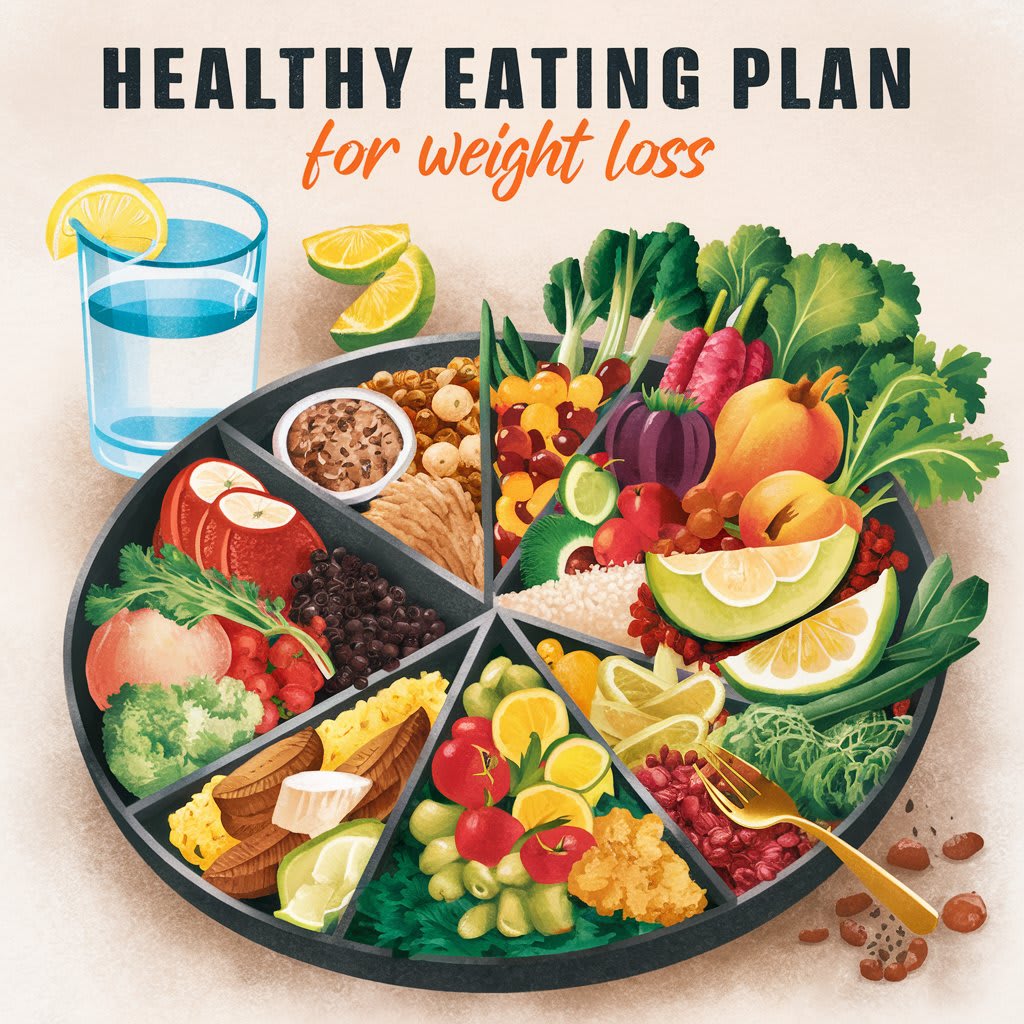
Developing a healthy eating plan for weight loss is crucial for achieving your fitness goals. By focusing on nutritious meal plans, you can shed unwanted pounds, boost your energy levels, and improve your overall well-being.
This guide will provide you with actionable steps to create a personalized healthy eating plan that promotes sustainable weight loss and helps you maintain your desired weight in the long term.
Understanding the Basics of Weight Loss
Before diving into the specifics of creating a healthy eating plan, it's essential to understand the basics of weight loss. Weight loss occurs when you consume fewer calories than you burn, creating a calorie deficit. However, not all calories are created equal.
The quality of your diet matters as much as the quantity. To lose weight effectively and healthily, focus on nutrient-dense foods that provide essential vitamins, minerals, and macronutrients.
Step 1: Set Realistic Goals
Setting realistic weight loss goals is the first step in developing a healthy eating plan. Aim for a gradual weight loss of 1-2 pounds per week, which is considered safe and sustainable. Rapid weight loss can lead to muscle loss, nutritional deficiencies, and a higher likelihood of regaining the weight.
Step 2: Calculate Your Caloric Needs
To create a calorie deficit, you need to determine your daily caloric needs. This can be done using online calculators that take into account your age, sex, weight, height, and activity level. Once you have your maintenance calories, subtract 500-1000 calories per day to achieve a weekly weight loss of 1-2 pounds.
Step 3: Focus on Macronutrients
A balanced diet includes the right proportions of macronutrients: carbohydrates, proteins, and fats. Each macronutrient plays a crucial role in your body, and getting the right balance is essential for weight loss and overall health.
Carbohydrates
Carbohydrates are your body's primary energy source. Choose complex carbohydrates like whole grains, fruits, vegetables, and legumes. These foods are high in fiber, which promotes satiety and helps regulate blood sugar levels.
Proteins
Protein is essential for muscle repair and growth. It also helps you feel full, reducing the likelihood of overeating. Incorporate lean protein sources such as chicken, turkey, fish, eggs, tofu, and legumes into your meals.
Fats
Healthy fats are vital for hormone production, brain function, and nutrient absorption. Include sources of unsaturated fats like avocados, nuts, seeds, olive oil, and fatty fish in your diet. Avoid trans fats and limit saturated fats.
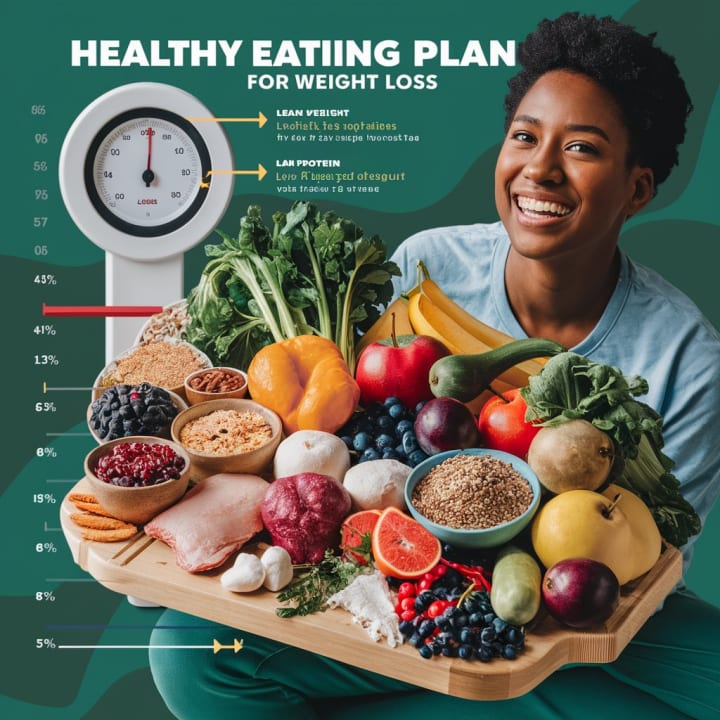
Step 4: Plan Balanced Meals
Creating balanced meals that include a variety of food groups ensures you get the necessary nutrients while staying within your calorie limits. A typical healthy meal should consist of:
- Half a plate of vegetables: Non-starchy vegetables like leafy greens, broccoli, bell peppers, and cauliflower.
- A quarter plate of protein: Lean meats, fish, eggs, or plant-based proteins.
- A quarter plate of whole grains or starchy vegetables: Brown rice, quinoa, sweet potatoes, or whole wheat pasta.
- A serving of healthy fats: Avocado, nuts, seeds, or olive oil.
Step 5: Control Portion Sizes
Portion control is key to maintaining a calorie deficit without feeling deprived. Use measuring cups, food scales, and visual cues to keep your portions in check. For example, a serving of protein should be about the size of your palm, and a serving of grains should be the size of a closed fist.
Step 6: Incorporate Healthy Snacks
Snacking can be part of a healthy eating plan if done right. Choose nutrient-dense snacks that keep you full and energized. Some healthy snack options include:
- Fresh fruit: Apples, berries, bananas, or oranges.
- Vegetable sticks: Carrots, celery, cucumber, or bell peppers with hummus.
- Nuts and seeds: Almonds, walnuts, chia seeds, or sunflower seeds.
- Greek yogurt: Low-fat or non-fat varieties with a drizzle of honey or a handful of berries.
Step 7: Stay Hydrated
Drinking enough water is crucial for weight loss and overall health. Water helps regulate your metabolism, aids digestion, and keeps you feeling full. Aim to drink at least eight 8-ounce glasses of water per day, and more if you're physically active.
Step 8: Limit Added Sugars and Processed Foods
Added sugars and processed foods are often high in empty calories and low in nutrients. These foods can lead to weight gain and increase your risk of chronic diseases. Limit your intake of sugary beverages, candies, baked goods, and processed snacks. Instead, opt for whole, unprocessed foods.
Step 9: Monitor Your Progress
Tracking your food intake and progress can help you stay accountable and make necessary adjustments to your eating plan. Use a food diary, mobile app, or online tool to log your meals, snacks, and beverages. Regularly review your entries to identify patterns and areas for improvement.
Step 10: Adjust and Adapt
As you progress on your weight loss journey, your caloric needs and goals may change. Be prepared to adjust your eating plan accordingly. If you hit a plateau or struggle to lose weight, reassess your caloric intake, macronutrient balance, and activity levels. Remember that weight loss is not linear, and it's normal to experience fluctuations.
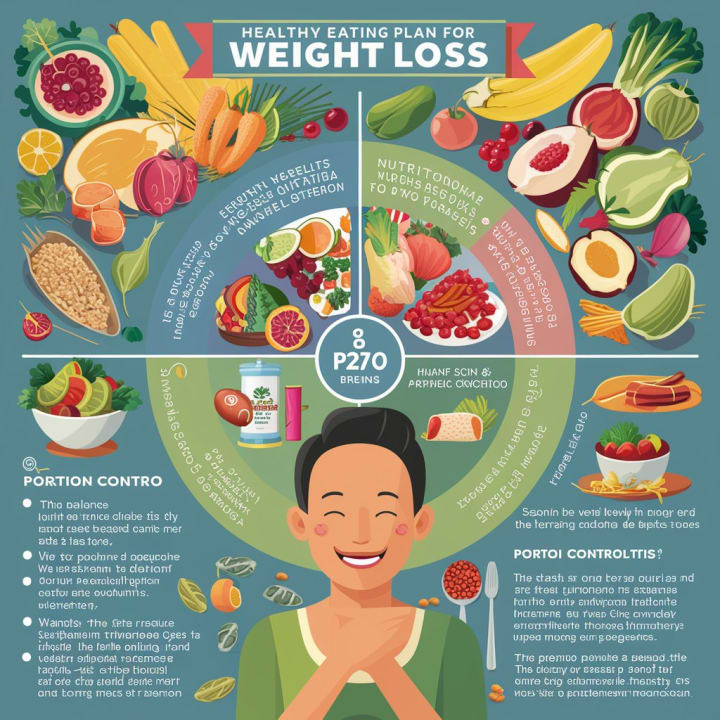
Sample 7-Day Healthy Eating Plan for Weight Loss
To help you get started, here's a sample 7-day healthy eating plan designed to promote weight loss and provide balanced nutrition.
Day 1
- Breakfast: Greek yogurt with mixed berries and a sprinkle of chia seeds.
- Snack: A small apple and a handful of almonds.
- Lunch: Grilled chicken salad with mixed greens, cherry tomatoes, cucumber, and a vinaigrette dressing.
- Snack: Carrot sticks with hummus.
- Dinner: Baked salmon with quinoa and steamed broccoli.
Day 2
- **Breakfast**: Overnight oats made with rolled oats, almond milk, and topped with sliced bananas and walnuts.
- Snack: A pear and a small serving of cottage cheese.
- Lunch: Quinoa and black bean bowl with avocado, corn, and salsa.
- Snack: Sliced bell peppers with guacamole.
- Dinner: Stir-fried tofu with mixed vegetables and brown rice.
Day 3
- Breakfast: Smoothie made with spinach, frozen berries, protein powder, and almond milk.
- Snack: A small orange and a handful of pistachios.
- Lunch: Turkey and avocado wrap with whole wheat tortilla, lettuce, and tomato.
- Snack: Celery sticks with almond butter.
- Dinner: Lean beef stir-fry with snow peas, carrots, and brown rice.
Day 4
- Breakfast: Scrambled eggs with spinach, tomatoes, and whole grain toast.
- Snack: A small handful of mixed nuts and a piece of dark chocolate.
- Lunch: Lentil soup with a side salad of mixed greens and vinaigrette.
- Snack: A cup of mixed berries.
- Dinner: Grilled shrimp with quinoa and roasted asparagus.
Day 5
- Breakfast: Whole grain cereal with low-fat milk and sliced strawberries.
- Snack: Greek yogurt with a drizzle of honey and a sprinkle of granola.
- Lunch: Chickpea and vegetable stir-fry with brown rice.
- Snack: A small apple and a few slices of cheese.
- Dinner: Baked cod with sweet potato mash and green beans.
Day 6
- Breakfast: Smoothie bowl with blended frozen bananas, spinach, and topped with granola and coconut flakes.
- Snack: A small handful of dried apricots and cashews.
- Lunch: Mixed green salad with grilled chicken, avocado, and balsamic dressing.
- Snack: Cucumber slices with tzatziki.
- Dinner: Turkey meatballs with whole wheat pasta and marinara sauce.
Day 7
- Breakfast: Avocado toast on whole grain bread with a poached egg.
- Snack: A small peach and a handful of almonds.
- Lunch: Tuna salad with mixed greens, cherry tomatoes, and olive oil dressing.
- Snack: Sliced bell peppers with hummus.
- Dinner: Baked chicken breast with quinoa and steamed broccoli.
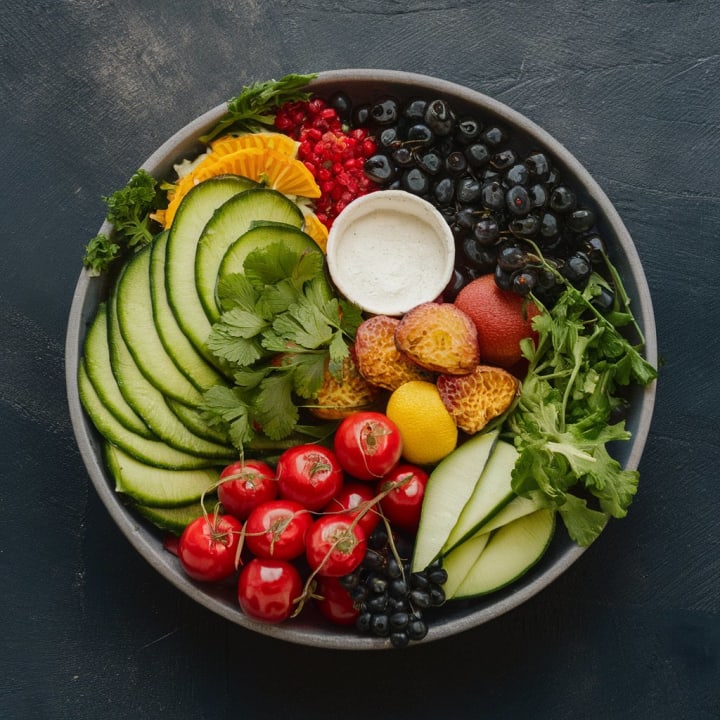
Tips for Long-Term Success
Creating a healthy eating plan for weight loss is just the beginning. To maintain your progress and achieve long-term success, consider the following tips:
- Stay Consistent: Consistency is key to achieving and maintaining weight loss. Stick to your healthy eating plan even on weekends and holidays.
- Practice Mindful Eating: Pay attention to your hunger and fullness cues. Eat slowly, savor your meals, and avoid distractions like TV or smartphones while eating.
- Get Active: Combine your healthy eating plan with regular physical activity. Aim for at least 150 minutes of moderate-intensity exercise per week.
- Seek Support: Surround yourself with supportive friends, family, or a weight loss group. Sharing your journey with others can provide motivation and accountability.
- Be Patient: Weight loss is a gradual process. Celebrate your progress, no matter how small, and don't get discouraged by setbacks.
Conclusion
Developing a healthy eating plan for weight loss is an empowering step toward achieving your fitness goals and improving your overall health. By setting realistic goals, focusing on nutrient-dense foods, practicing portion control, and staying consistent, you can create a sustainable
About the Creator
Sherif Saad
Hey there, fellow word enthusiasts! I'm Sherif, and I'm thrilled to embark on this creative journey with you
I'm a passionate writer with a love for storytelling that knows no bounds diving into the world of words.
Enjoyed the story? Support the Creator.
Subscribe for free to receive all their stories in your feed. You could also pledge your support or give them a one-off tip, letting them know you appreciate their work.


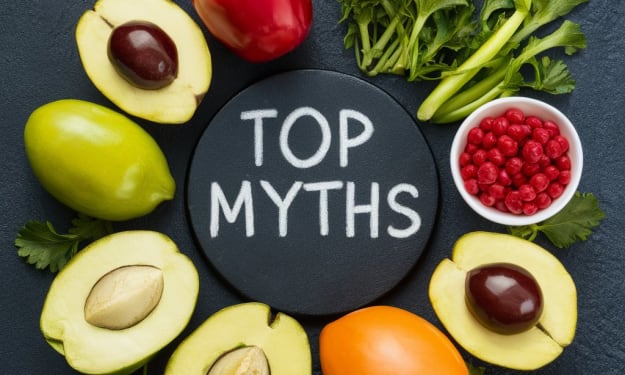



Comments (1)
Your content is insightful and motivating...... it’s a great resource for anyone on their fitness journey..... great job